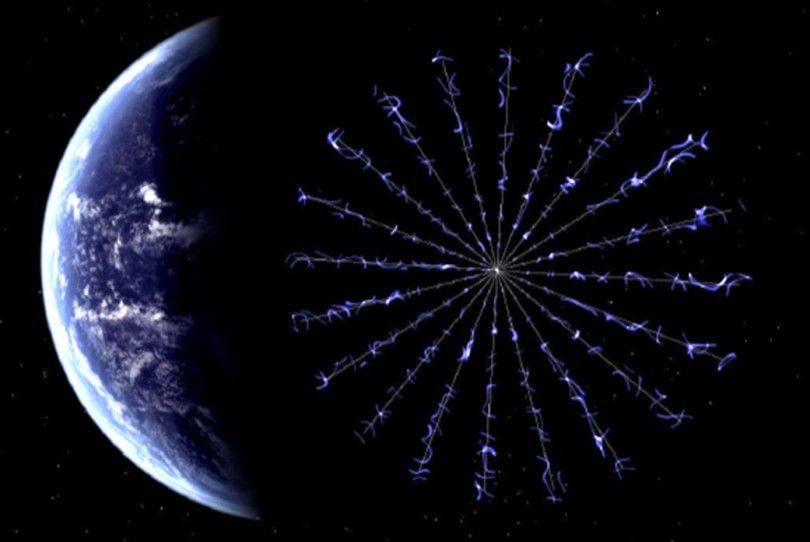Ученые из Германии и Великобритании предложили использовать систему из магнитных и электрических парусов для торможения путешествующих в межзвездном пространстве станций. Посвященный исследованию препринт авторы опубликовали на сайте arXiv.org.
The main benefit of an interstellar mission is to carry out in-situ measurements within a target star system. To allow for extended in-situ measurements, the spacecraft needs to be decelerated. One of the currently most promising technologies for deceleration is the magnetic sail which uses the deflection of interstellar matter via a magnetic field to decelerate the spacecraft. However, while the magnetic sail is very efficient at high velocities, its performance decreases with lower speeds. This leads to deceleration durations of several decades depending on the spacecraft mass.
Within the context of Project Dragonfly, initiated by the Initiative of Interstellar Studies (i4is), this paper proposes a novel concept for decelerating a spacecraft on an interstellar mission by combining a magnetic sail with an electric sail. Combining the sails compensates for each technologys shortcomings: A magnetic sail is more effective at higher velocities than the electric sail and vice versa. It is demonstrated that using both sails sequentially outperforms using only the magnetic or electric sail for various mission scenarios and velocity ranges, at a constant total spacecraft mass. For example, for decelerating from 5% c, to interplanetary velocities, a spacecraft with both sails needs about 29 years, whereas the electric sail alone would take 35 years and the magnetic sail about 40 years with a total spacecraft mass of 8250 kg.
Furthermore, it is assessed how the combined deceleration system affects the optimal overall mission architecture for different spacecraft masses and cruising speeds. Future work would investigate how operating both systems in parallel instead of sequentially would affect its performance. Moreover, uncertainties in the density of interstellar matter and sail properties need to be explored.
Космическая станция, которая в состоянии путешествовать до других звезд и передавать на Землю полученные данные, должна иметь сравнимую со световой скорость. По всей видимости, первые межзвездные путешествия будут пролетными, поскольку высокая скорость аппарата не позволит ему выйти на орбиту звезды или экзопланеты.
Между тем, для более эффективного сбора данных межпланетной станции, скорее всего, необходимо уменьшить свою скорость. В своей работе ученые предлагают это делать при помощи магнитного паруса. Он позволяет использовать статическое магнитное поле для отклонения заряженных частиц (представляющих собой частицы звездного ветра) и особенно эффективен для торможения при высоких скоростях станции.
По мнению ученых, использование системы из магнитных и электрических парусов позволит наиболее эффективно совершать межзвездные перелеты. Например, для разгона до скорости 15 тысяч километров в секунду (что составляет пять процентов от скорости света) корабля аппарата массой 8250 килограммов потребуется 29 лет. В случае, если будет использоваться система только из электрического паруса, на это уйдет 35 лет, только магнитного — 40 лет.
Если вы нашли ошибку, пожалуйста, выделите фрагмент текста и нажмите Ctrl+Enter.








Сообщить об опечатке
Текст, который будет отправлен нашим редакторам: